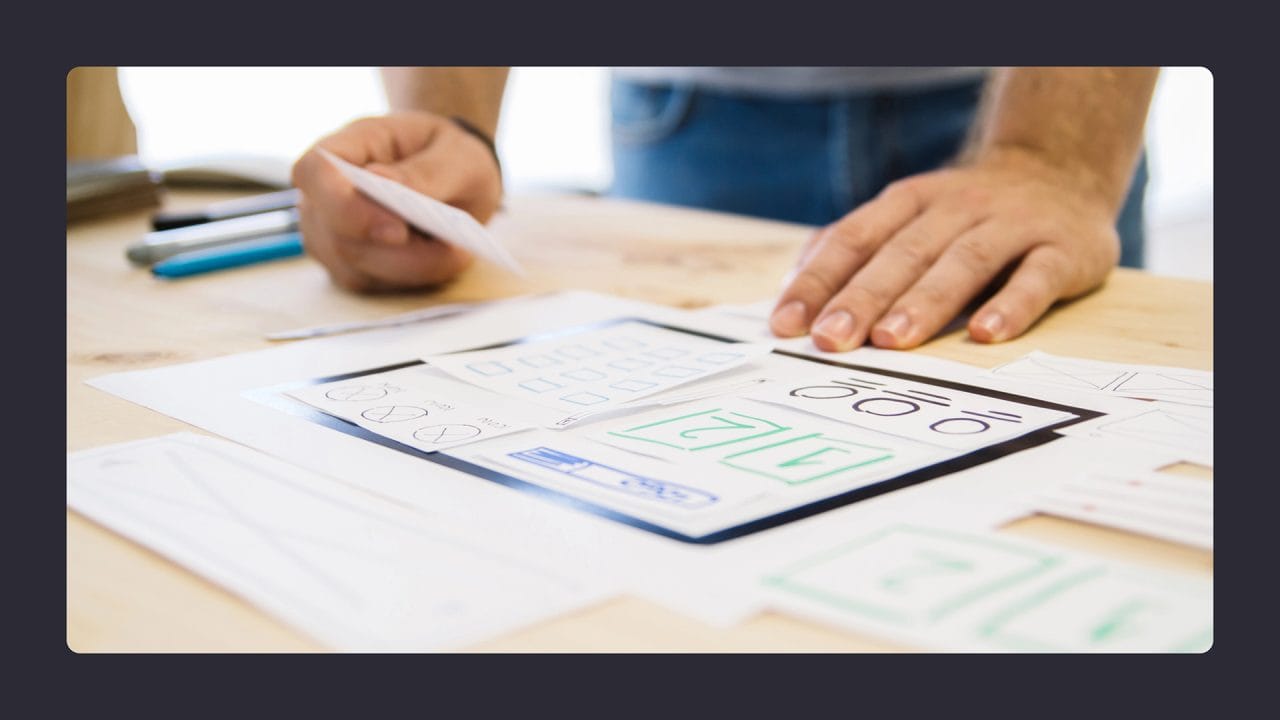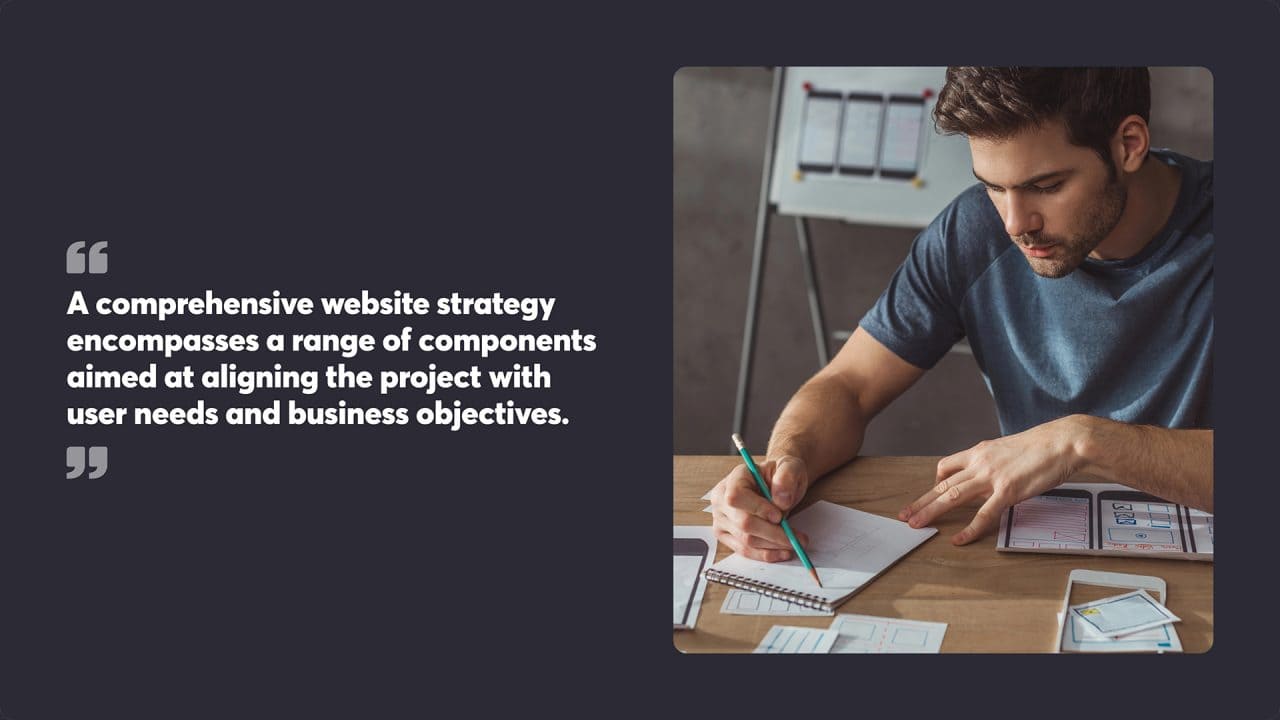
User Interface (UI) and User Experience (UX) design are critical components in creating websites that are both effective and enjoyable to use. User interface design focuses on the visual aspects of a website’s interface, encompassing the design of on-screen elements such as buttons, icons, spacing, and typography. UX, on the other hand, involves the overall feel of the experience, ensuring that the website is not just aesthetically pleasing but also functionally seamless for the user. Together, UI and UX contribute significantly to the satisfaction of users, as a well-designed interface can facilitate effortless navigation and interaction.
The design process for UI/UX is iterative and user-centred, encompassing various key elements such as simplicity, consistency, clarity, and accessibility. The goal is to create websites that look good and meet users’ specific needs, enhancing their overall experience.
By focusing on users first, we can create a website that is intuitive, responsive, and solves real problems. This strategic approach underlies the foundations of a successful website, aiming to serve a clear purpose and provide a coherent strategy in its operation.
Key Takeaways
- User-Centered Design Process: The key to successful UI/UX design lies in its iterative, user-centered approach. This involves continuous testing and feedback loops to refine the product, ensuring it meets user needs effectively. By prioritising user feedback and making iterative improvements, designers can create more intuitive and satisfying user experiences.
- Balancing Aesthetics and Functionality: Effective UI/UX design strikes a balance between visual appeal and functional usability. While UI design focuses on aesthetics, including layout, colours, and typography, UX design ensures that the product is easy to use and provides a seamless experience. This balance is crucial for creating interfaces that are not only beautiful but also highly functional.
- Importance of Comprehensive User Research: Conducting thorough user research is fundamental to understanding the needs, behaviours, and pain points of your target audience. This research informs every stage of the design process, from initial concepts to final implementation, ensuring that the end product is tailored to the user’s real-world requirements and enhances their overall experience.

What Is the Goal of Your Website?
The objective of your website is grounded in the synthesis of effective UI/UX design principles, extensive user research, strategic user journey planning, and the pursuit of high customer satisfaction.
Understanding UI UX Design
UI/UX design is an integral part of creating a digital product. A UX designer plays a crucial role in this process by focusing on the overall user experience and ensuring it is simple and effortless. UI design refers to the presentation and cohesive look of a product’s interface, while UX design concentrates on the complete experience a user has with a product. UX designers aim to make a user’s journey as satisfying as possible, which means creating a website that is simple to use and also engaging. Meanwhile, UI designers craft the visual aspects users interact with, ensuring a consistent and aesthetically pleasing interface.
The Importance of User Research
Research is the cornerstone of UI/UX design. It involves gathering insights into user behaviour and needs through various methods, such as interviews, surveys, and observation. Designers rely on this data to inform their decisions and create designs that resonate with users. Without an in-depth understanding of the audience, a website cannot be crafted to meet its goals.
Strategising User Journey
Strategising the user journey involves plotting the path a user will take on a website, covering the entire user journey from initial contact to the final interaction. Creating effective user flows and conducting usability tests are part of this strategy. This includes understanding the steps a visitor takes, from a general inquiry to the fulfilment of their need, and ensuring the process is as smooth as possible.
Achieving Customer Satisfaction
The pinnacle of a successful website is customer satisfaction. A design thinking approach is applied to enhance usability and meet user expectations, aiming for user-friendly product interfaces. Success is measured by the satisfaction of the user after their interaction with the website, leading to repeat visits and positive feedback. Designers aim to refine the UX to foster loyalty and encourage users to return.

What Does a Website Strategy Include?
A comprehensive website strategy encompasses a range of components aimed at aligning the project with user needs and business objectives.
Effective Evaluation
The initial phase involves assessing the current website to identify areas for improvement. Website Evaluation involves inspecting various aspects such as user behaviour and performance metrics to establish a baseline for the strategy.
Deep User Research and Analysis
This critical stage involves gathering and analysing data about the target users. User Research & Analysis provides insight into user personas, user behaviour, and user insights. These findings inform the design process to create user journeys that resonate with the target users.
Comprehensive Market Research
Market research provides an understanding of the competitive landscape. Conducting thorough analysis helps in distinguishing the website’s positioning and offerings. Key areas include analysing competitor websites and industry trends to identify opportunities for differentiation.
Detailed Wireframing
Creating Wireframes is a vital step in plotting the website’s structure. Wireframing establishes the information architecture and maps out the user journey, laying the groundwork for subsequent design phases. This blueprint guides the visual and functional aspects of the website.
Visual and Interactive Elements – High-Fidelity Mockups
This process translates wireframes into detailed, visually rich designs. High-fidelity mockups incorporate visual hierarchy and visual and interactive elements such as typography, colour palettes, animations, and navigational touch points to craft interactive and appealing user interfaces. These mockups are a close representation of the final product.
Prototyping Interactions
Prototypes mimic the actual user experience by simulating the website’s interactivity. Interactive Prototypes are developed to test and refine the design. This step often involves user testing to collect feedback and iterate on the prototyping before final development begins.

The Keys to a Successful Website Strategy
Creating a successful website involves prioritising a seamless UX design, incorporating functional UI components, valuing user feedback, and focusing on user interaction optimisation.
The UX Design Framework
The foundation of a compelling website strategy is an effective UX design, encompassing all aspects of a user’s interaction with a company, its services, and its products. A strategic framework is essential, focusing on ease of use and designing with user needs and behaviours at the forefront. Accessibility should be integrated into the design process to ensure the website is available to and usable by people with disabilities, thereby embracing inclusive design principles.
Integrating User Interface Components
The interface through which users interact with a website is pivotal to the user experience. UI design, which includes visual design elements like typography, colour schemes, and images, as well as interactive elements such as buttons, sliders, and forms, is essential. UI elements should be cohesive and intuitive, guiding users smoothly from one section of the site to another. Using design tools to maintain visual consistency can significantly contribute to a site’s strategic success.
Leveraging User Feedback
User feedback is vital in refining a website’s strategy. Through usability testing and user testing, designers can gain insights into user needs and the functionality of their design. This direct input from users can inform enhancements that make the site more user-friendly. Regularly updating the site based on user feedback helps maintain relevancy and user satisfaction.
Optimising for User Interaction
How users interact with a website shapes their overall experience. Optimising for engagement means ensuring each interaction is meaningful and leads users towards their goals. Aspects such as load times, responsive design, and interaction design are critical. By analysing user behaviour, designers can tweak the interface to provide a smooth and enjoyable experience for the user.
With our website design projects, we start with the prospective clients’ goal in mind, and build a website that guides them towards that goal. More conversions via your website means you move closer to your business goals.
If you have any questions about website design, or would like us to help make your website convert more visitors into clients, contact us today.
Website design
Build an amazing website that delivers
Achieve your goals with a beautiful, high-performing website. Using the latest technologies and tools, we help you enhance your online presence and drive success by turning your website dreams into reality.





